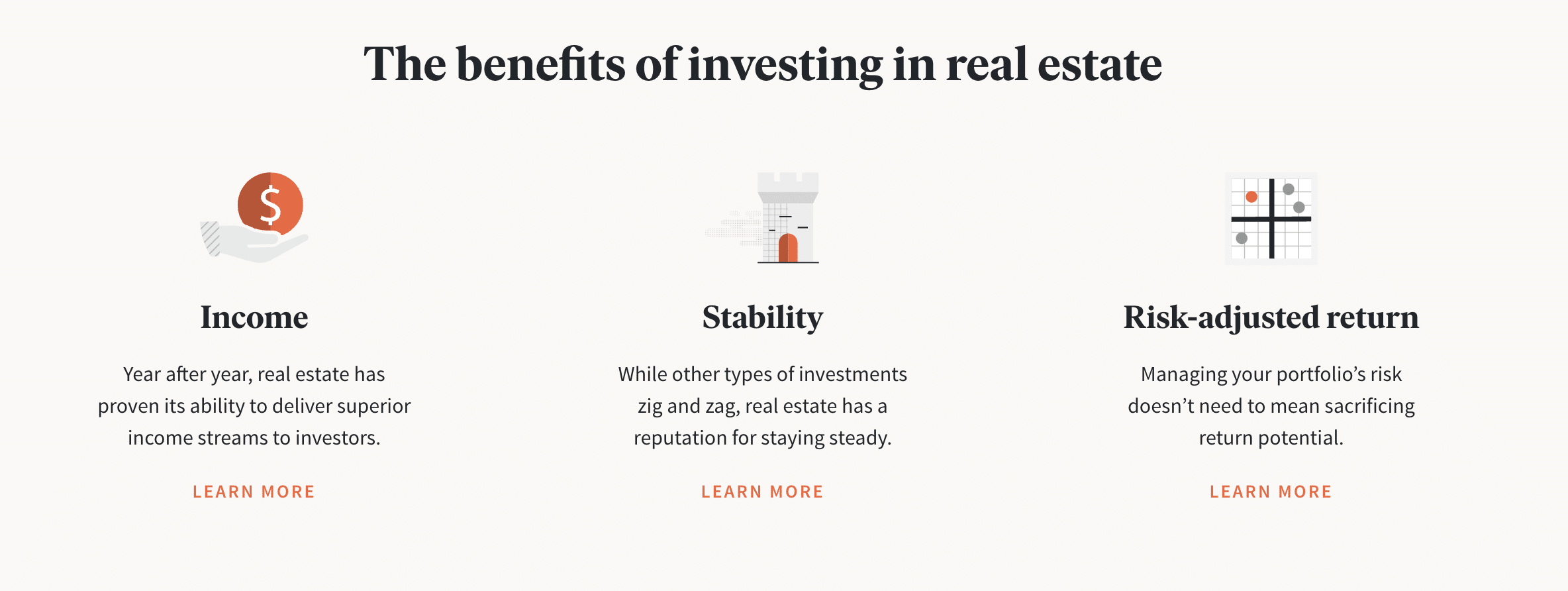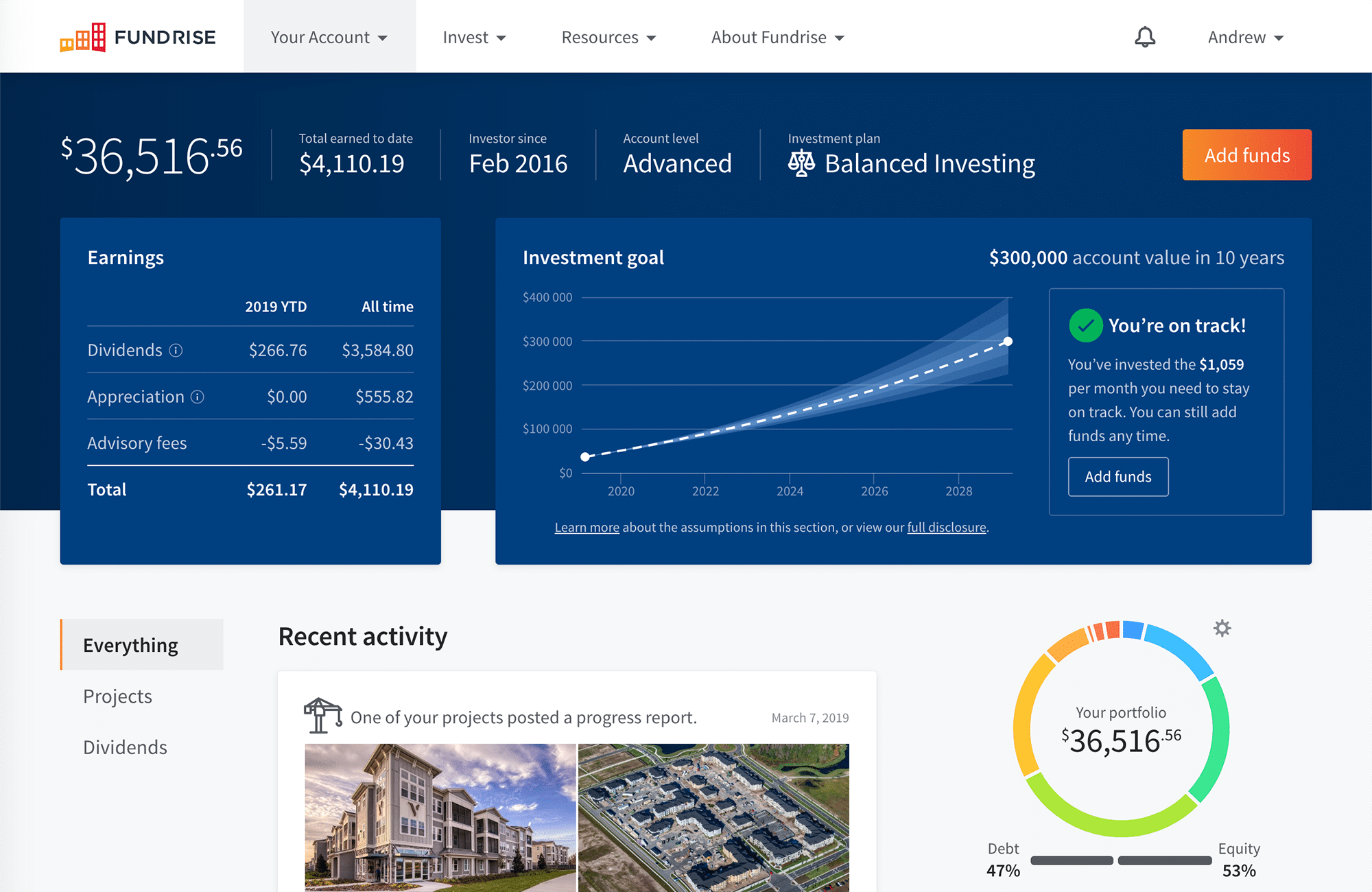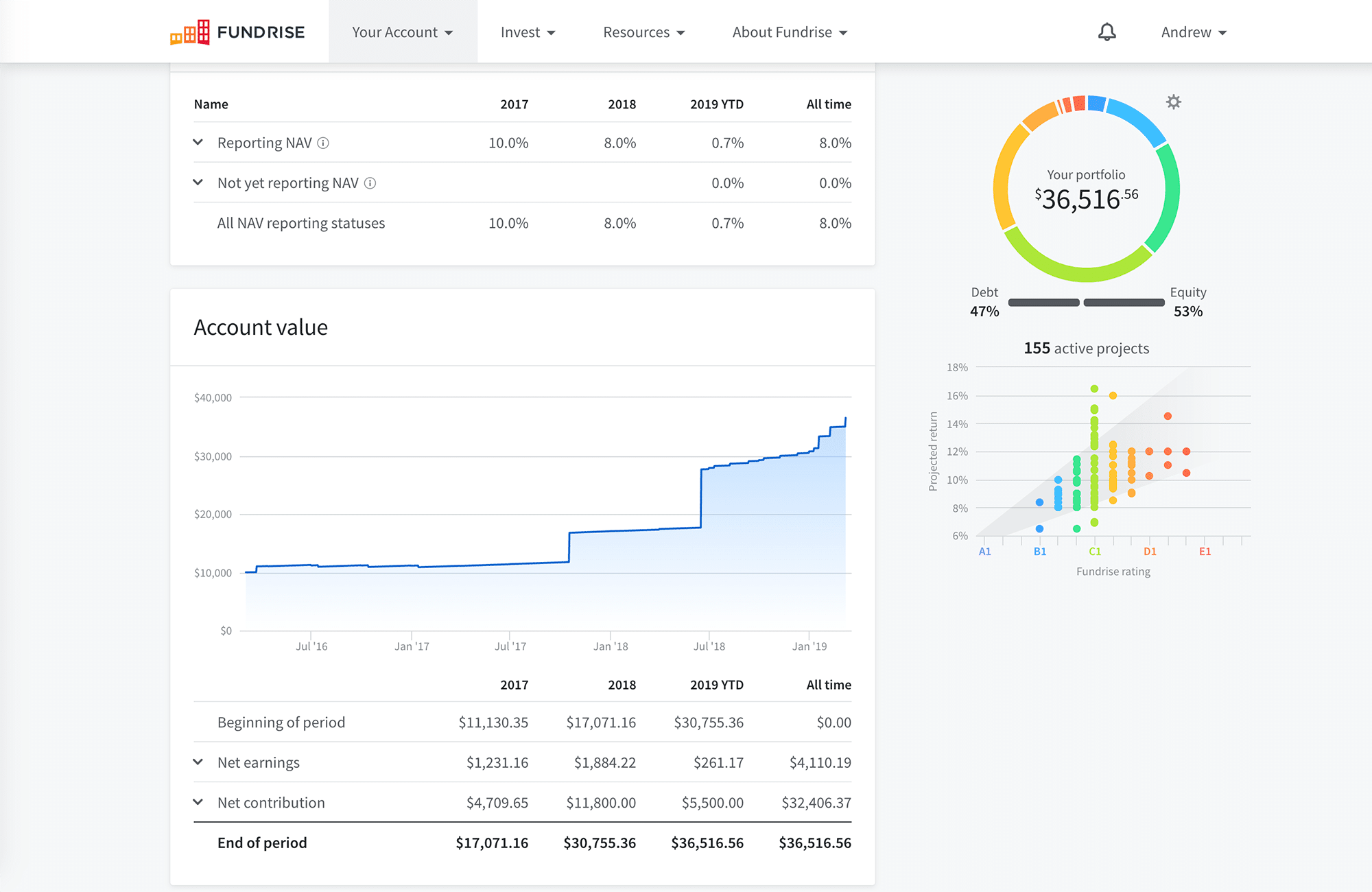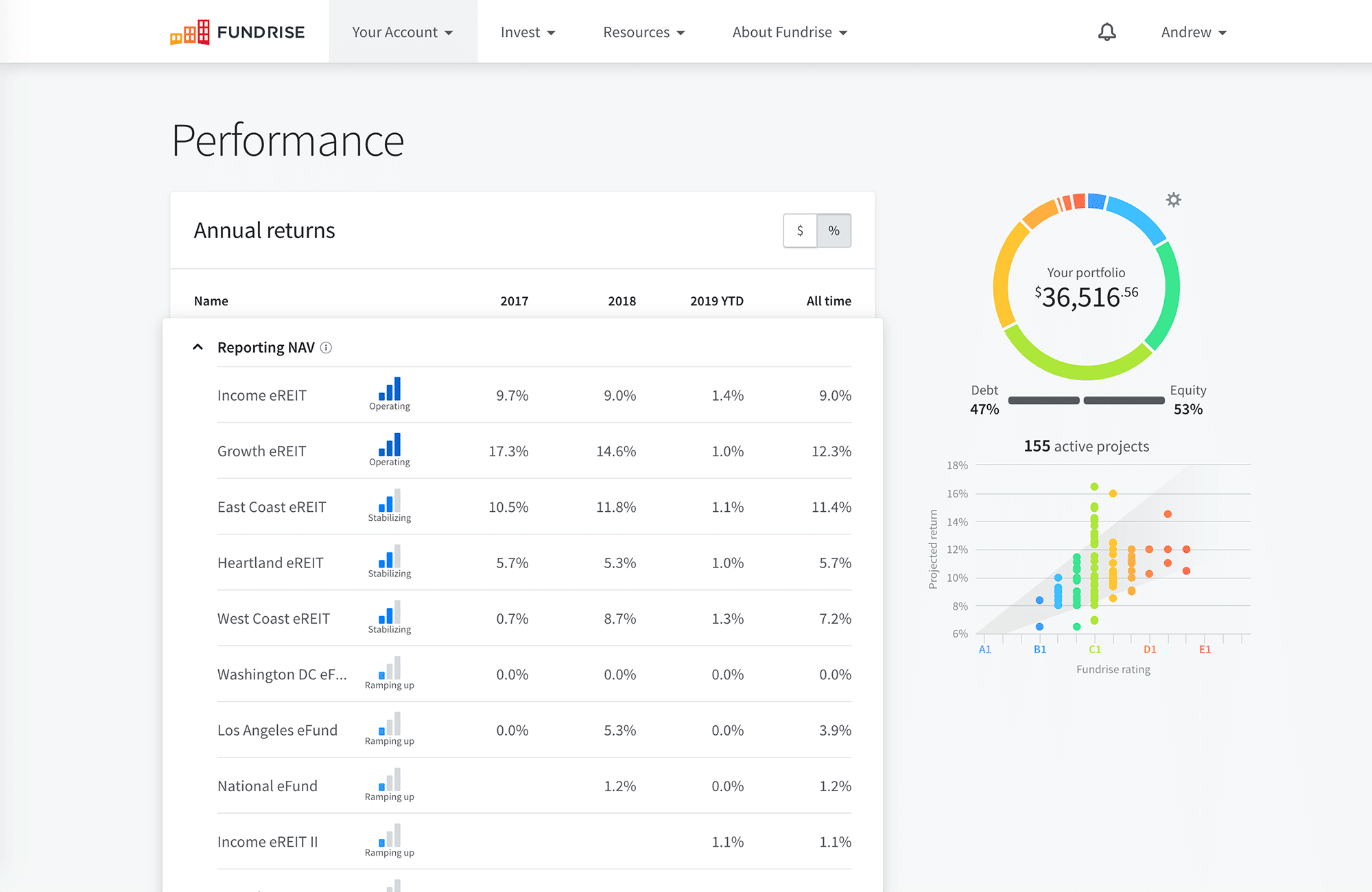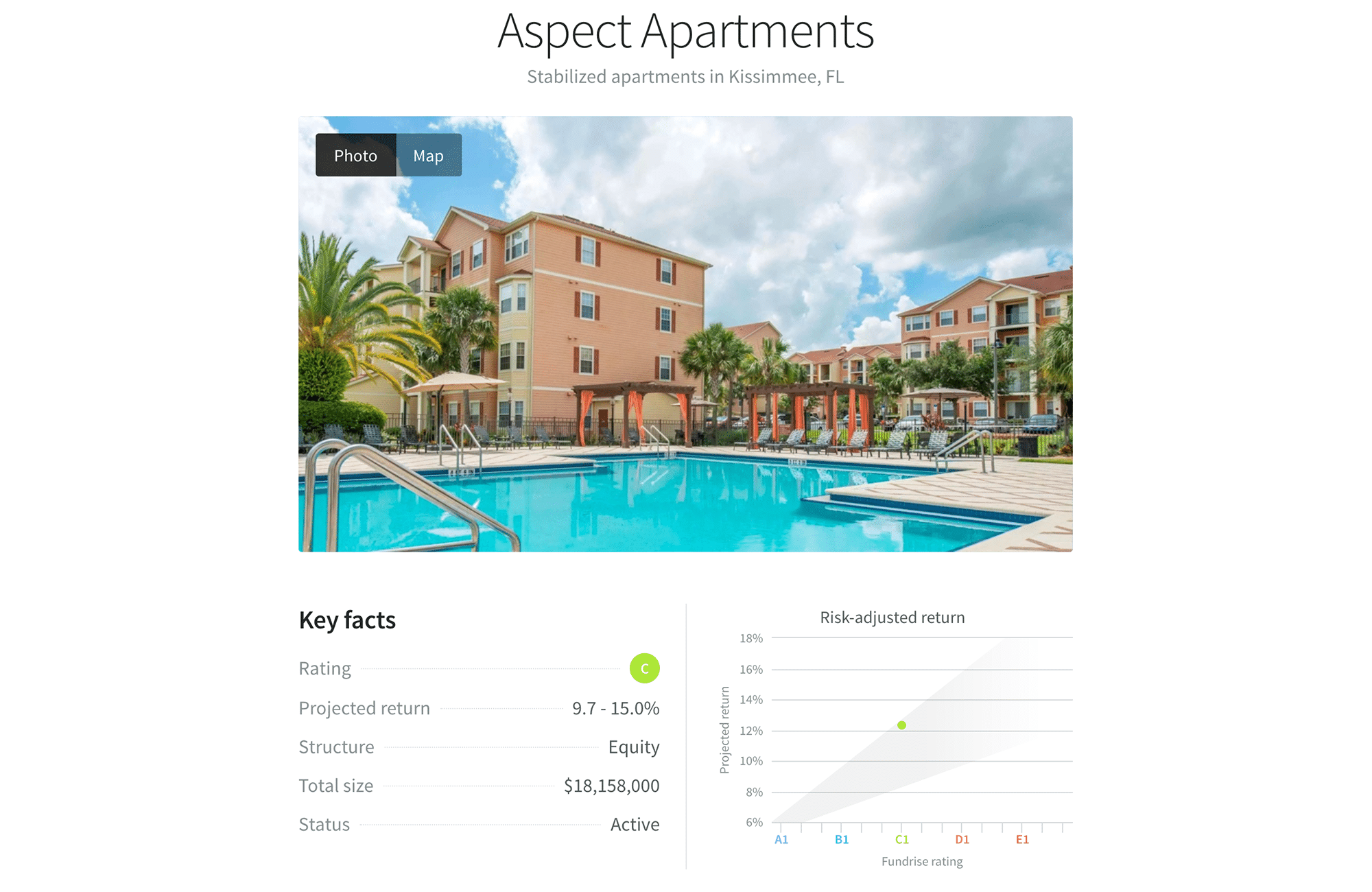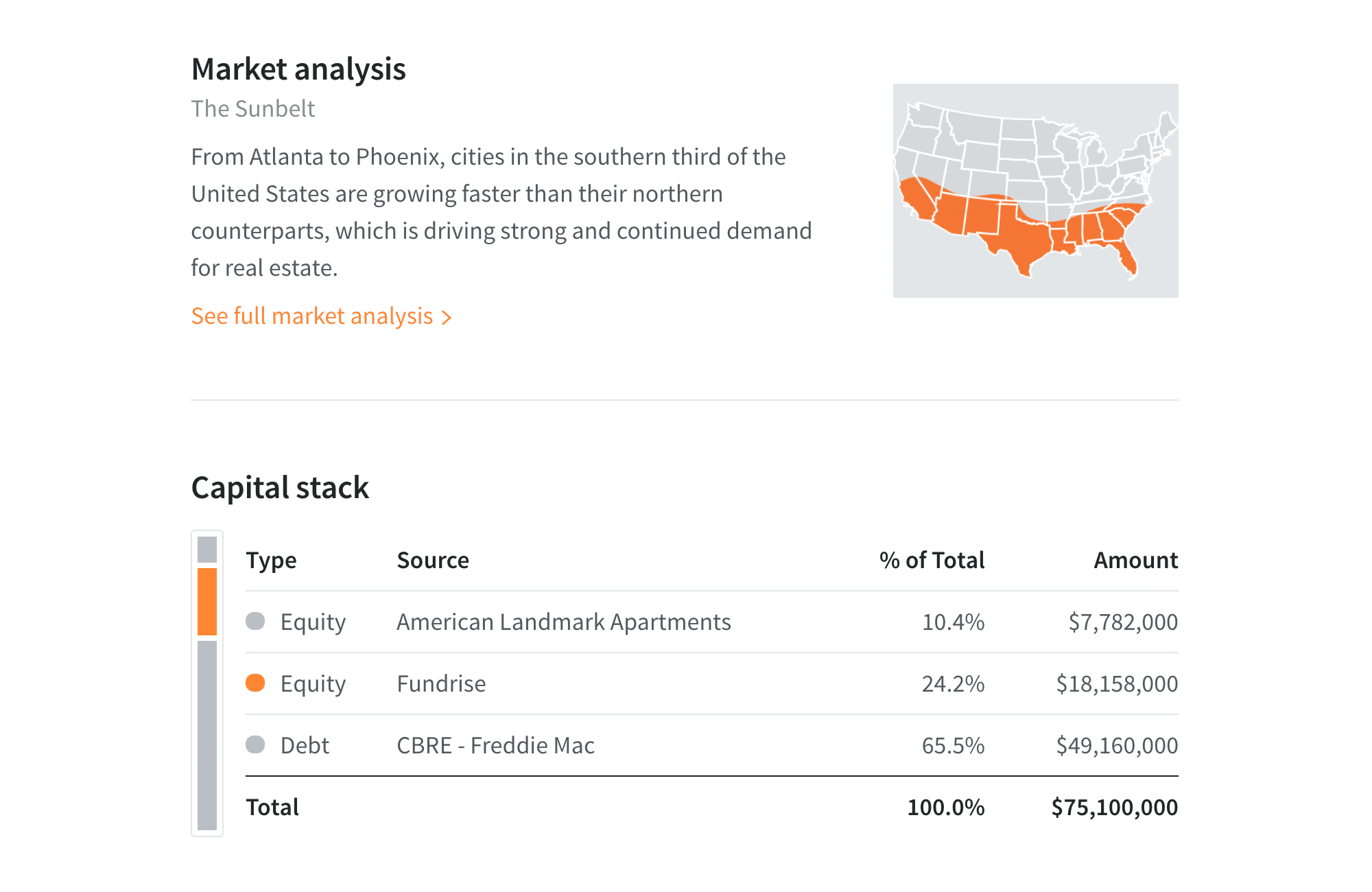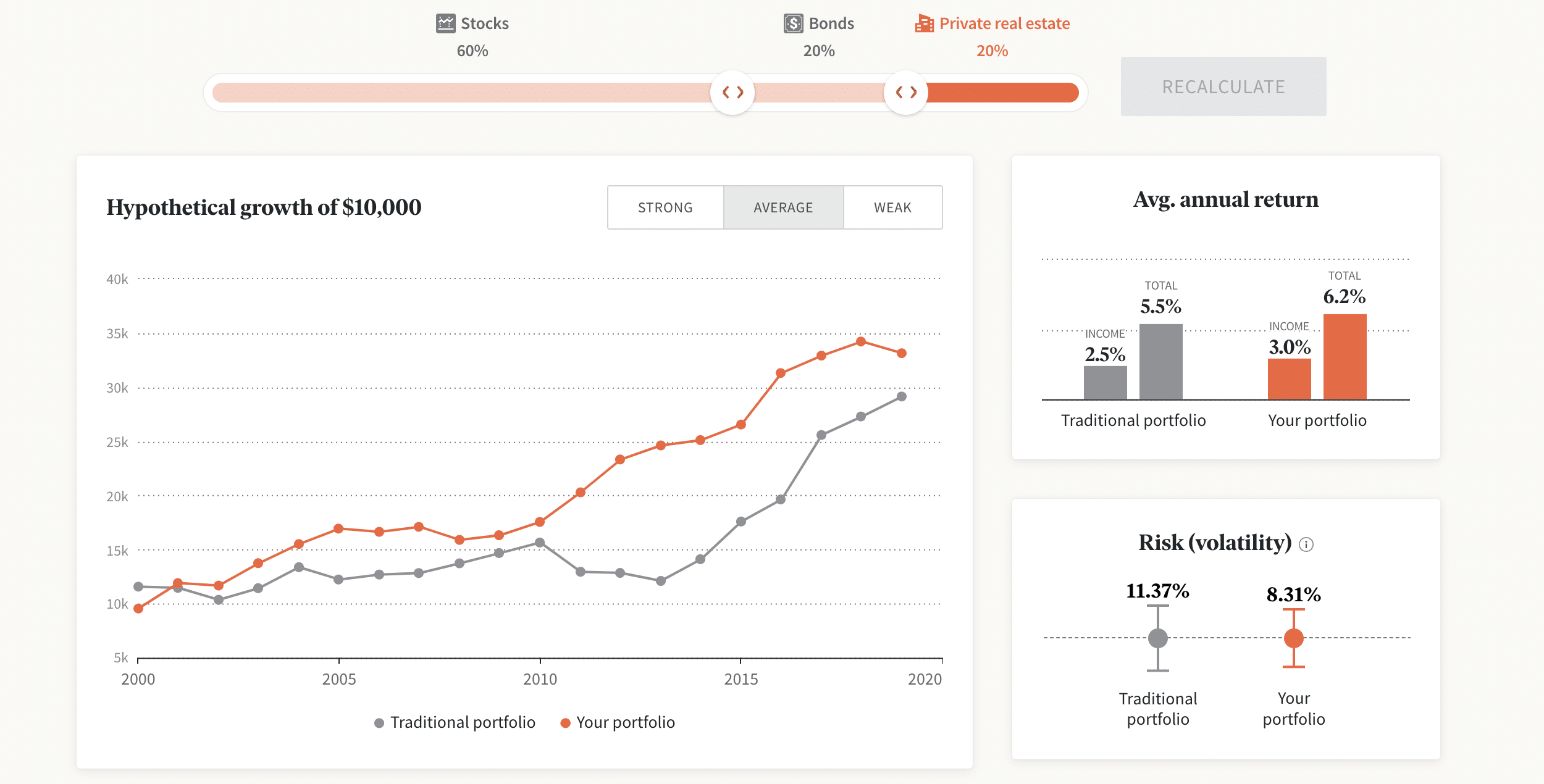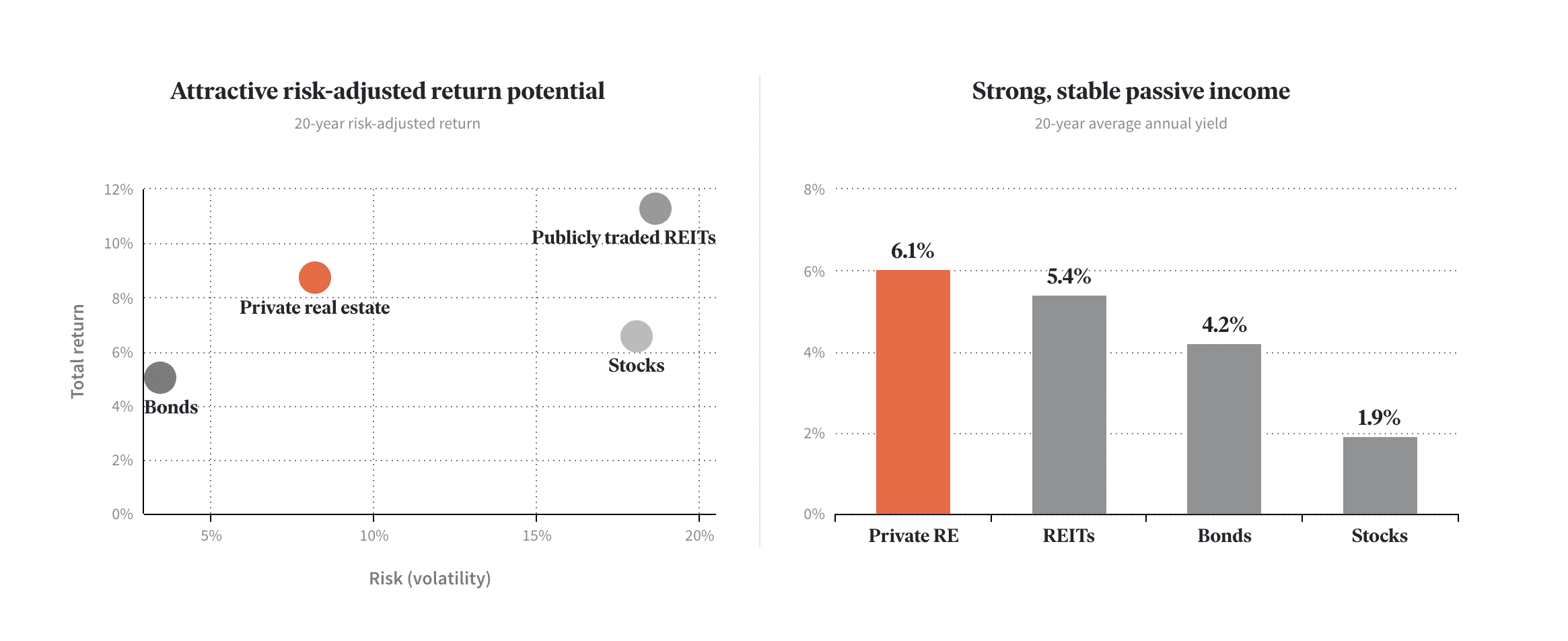This is a testimonial in partnership with Fundrise. We earn a commission from partner links on Listen Money Matters. All opinions are my own.
I’ve always been a hands-on investor, particularly in the realm of real estate. My wife and I are proud owners of three rental properties, and our cozy condo is the fruit of a successful fix-and-flip venture we undertook just two years ago. Recently, though, we’ve ventured into the exciting world of online real estate through Fundrise. So, did their platform live up to the buzz? Get ready to find out in this Fundrise review.
Real estate is both an essential part of our wealth-building strategy and something that holds particular interest for us. It’s a personal finance strategy that is, above all, focused on long-term investment growth.
We’ve interviewed Ben Miller, the CEO on our podcast, twice.
First, when Fundrise just started and was only available to accredited investors and a second time after they opened up their platform to ordinary people – we invested soon after. They’ve since scaled massively, paid me massive dividends, and relaunched their entire platform as “Fundrise 2.0“.
Fundrise achieved 22.99% average returns across all client accounts as of 2021.
We have over $130,000 of our own money invested in Fundrise. So, I thought it was long overdue to break down what they are, why you should care, and what they do well (passive income). Let’s get nerdy!
Minimum Investment:
$10
Management Fees:
1% a year
Promotion:
Free Upgrade to Core Plan
Investment Type:
eREITs
Investment Model:
Online
Accredited Investors Only:
No
Mobile App:
Yes
Minimum Investment:
$1,000
Management Fees:
One-time 0.5% purchase fee
Promotion:
Open a Free Account
Investment Type:
Single-family rental properties
Investment Model:
Turnkey
Accredited Investors Only:
No
Mobile App:
No
Minimum Investment:
$1,000
Management Fees:
1%-4%
Promotion:
Start Investing
Investment Type:
Real estate debt
Investment Model:
Online
Accredited Investors Only:
Yes
Mobile App:
No
Editor's Note
What is Fundrise?
Fundrise is a real estate platform that allows ordinary investors access to returns they couldn’t get on their own (or through a REIT). They’re primarily focused on real estate deals and investment options overlooked by institutional investors and out of reach for most individuals.
Investing with Fundrise is available to non-accredited investors. Simply put, anyone can be a real estate investor.
And what is a REIT? A REIT, or Real Estate Investment Trust, is a company that owns or finances income-producing real estate.
Most REITs are similar to Fidelity’s FRESX in that they manage many billions of dollars in assets and thus have to invest a significant amount of money. So, to invest in new deals and manage the fund’s existing investments, they typically need to make larger bets. They don’t have time to chase smaller properties.
Significant REIT investments often aren’t directly in real estate assets but companies like Public Storage. Because what’s even easier than going out and finding real estate deals worthy of investing in? Investing in companies that do that already.
It seems like a flawed deal. There is little value added to it, considering a REIT is much more expensive than only buying some of Public Storage yourself – for less.
The problem is that this is pretty common, and there aren’t many real estate investment trusts that are strong picks if you’re looking to buy into the rental market.
Individuals, on the other hand, are primarily investing in smaller properties ($100k – $200k in value) that are in higher demand making it harder to generate a reasonable profit. It’s also more distressing and expensive to manage 100 properties instead of 10. That’s why the vast majority don’t go down this road.
How Fundrise Works
Fundrise fits itself right in the middle.
First, they don’t look at single large properties or baskets of many properties (like Public Storage) and instead focus entirely on deals in the low millions.
The return on these deals is higher because there is less competition. The problem then becomes how difficult and expensive it becomes to work with banks to acquire funding for these deals. That’s where the Fundrise platform fits in.
Fundrise can move quickly, providing a large amount of cash to invest in a short time window. This allows them to focus entirely on senior debt and ownership positions that dramatically reduce the risk of the investments.
A senior position means that in the event of a failed project or investment, Fundrise gets paid ahead of other lenders/owners. That’s the power of investing with a crowd; you are the bank.
Fundrise Costs, Figures, and Annual Fees
Before we get into the details, here’s a high-level view of their investment platform. In the sections below, we’ll get into Fundrise’s returns, performance, and how it all works.
| Year Founded | 2012 |
| Assets Managed | $2.87 Billion |
| Number of Investors | 385,000+ |
| Minimum Investment | $10 |
| Fees | 0.85% Annual Management Fee 0.15% Annual Advisory Fee |
| Accredited Investor | No |
| Asset Types | Real Estate Debt and Equity |
Fundrise Account Types
You can open individual taxable or joint accounts, trusts, entity accounts, and self-directed IRAs through Fundrise. Because your earnings are taxed as ordinary income, placing private real estate investments inside an IRA (instead of a taxable account) can serve as a tax shelter while lowering your tax bill.
Historical Returns and Liquidity
Whenever we talk about investing, we usually discuss the average return. We can’t predict the future – year to year, things may not work out as planned.
So, how has Fundrise performed?
Performance and Average Returns:
In terms of cumulative return, it’s going well.
Cumulative is a bit tricky because it’s also a factor of how much is invested. If exponentially more people invest, but their returns are increasingly small, this graph might not look different.
The averaged annualized returns of Fundrise are equally exceptional:
| Year | Return |
|---|---|
| 2014 | 12.25% |
| 2015 | 12.42% |
| 2016 | 8.76% |
| 2017 | 11.44% |
| 2018 | 9.11% |
| 2019 | 9.47% |
| 2020 | 7.31% |
| 2021 | 22.99% |
Liquidity:
Unlike publicly-traded REITs that often hold other publicly traded assets, all of Fundrise’s capital is invested in properties they pick. As a result, they can’t merely pull out money from a deal without selling the actual property.
However, to provide better liquidity, they have quarterly windows to allow existing investors to cash out. So, while you can’t withdraw your cash whenever you’d like – you can do it four times throughout the year without a penalty.
Early Withdrawals
Fundrise investments aren’t illiquid, but there may be additional costs depending on when you withdraw. Shares fall into two categories: Introductory Shares and Non-Introductory Shares. Introductory Shares give you a 90-day window from the purchase date to liquidate without penalty.
Non-Introductory Shares are investments held greater than 90-days but less than five years. If your shares fall under this category and want to liquidate, there are penalties.
| Age of Shares | Approximate Penalty (%) of total share value |
|---|---|
| 90 days to 3 years | 3% |
| 3-4 years | 2% |
| 4-5 years | 1% |
| >5 years | None |
If you’re liquidating shares held longer than five years, 100% of the value should be returned to you, penalty-free.
Fundrise eREITS and eFunds
I think it’s important to understand what you invest in, so I’ve gone to great lengths to explain how it all works in the main sections below. That said, Fundrise makes it all way easier just by signing up.
Similar to how
Fundrise’s platform focuses not on the type of return you’d like to see or where the properties are located but rather on your financial goals. Those goals are categorized as supplemental income, balanced investing, and long-term growth.
You’ll have the option to choose your portfolio strategy as soon as you make your first investment with Fundrise. Once you’ve chosen your investment plan, Fundrise allocates your funds across a diversified portfolio of residential and commercial properties.
If you’d prefer a more hands-on approach, consider Fundrise Pro. For $10/month (or $99/year), you’ll unlock:
- One-off payment options if you’d like to invest in a particular fund.
- Total control over which funds you’re invested in.
- Exclusive data from a mixture of Fundrise’s portfolios and relevant market research companies.
- Curated content from Wall Street Journal.
Some of that content includes snippets from WSJ Pro: Private Equity and WSJ Pro: Venture Capital, which could cost you $2,995/year if you had a full subscription to each. This makes it worth considering whether you’re new and looking to learn or experienced and want to stay up-to-date.
With Fundrise and Fundrise Pro, you can choose between a simplified investment experience or a more personal approach, ensuring you can invest in a way that aligns with your preferences and financial goals.
eREITs vs. eFunds: What’s the Difference?
Think of an eREIT like a mutual fund for commercial real estate. It’s a diversified portfolio spread across real estate assets like office buildings, hotels, and apartments that’s professionally managed. It’s not publicly traded like traditional REITs and carries lower costs by cutting out the middleman (no brokers or commissions). Instead, all eREITs go straight to you, the investor.
An eFund works like an eREIT, except it invests in residential real estate like single-family homes, condos, and townhomes. It’s growth-focused, structured as a partnership, and avoids the double taxation of corporations.
Note: Fundrise eFunds are available at the Advanced account level.
Fundrise Investment Portfolios
Income and Growth
The Income eREIT is focused on investing in debt, not all that different from how a bank collects an interest rate on a mortgage. Thus the fund is all about cash flow.
It invests using the following three core principles:
- Small Assets: We believe targeting assets that fall under the radar of big banks and investment funds allow us to achieve higher relative returns.
- Regulatory Inefficiencies: Increased banking regulations as a result of the 2008 financial crisis have opened up new investment opportunities for more flexible lenders to expand into the market.
- Urban Infill Location: Real estate assets located in the core of large cities benefit from higher demand and higher pricing due to the relative lack of supply.
The Growth eREIT focuses on equity. Unlike the Income eREIT, this fund owns properties with an eye towards appreciation.
Its primary focus is on multi-units, and it also follows three core principles:
- Workforce Housing: There is a growing need for affordably-priced apartments, referred to as “workforce housing.” However, there is a limited supply of existing apartments that meet that demand. The result is that affordable apartments face little competition from newly built apartments. We believe this growing demand and lack of supply will result in existing “workforce housing” increasing value over time.
- Low-Cost Basis: The Growth eREIT seeks to acquire properties below their replacement cost, a strategy known as “value investing.” In other words, the price paid to purchase a property is less than what it would cost someone else to build a similar property in the same location today.
- Long-Term Fixed Financing: Interest rates on loans for acquiring apartment buildings are at historic lows. By securing long-term, fixed-rate debt today, the Growth eREIT can maximize consistent cash-flow while also reducing volatility over the investment term.
Regional eREITs
Both the Income and Growth eREITs are hyper-focused on either cash flow or appreciation. The regional eREITs provide a more balanced investing approach and a way for you to invest in sections of the US that are of particular interest. As such, they’re broken into three balanced funds: East Coast, Heartland, West Coast.
Regional eFunds
Three growth-focused eFunds are available at the Advanced account level ($10,000 minimum investment) offering more advanced investing strategies and potentially higher returns. They’re broken into the Washington DC, Los Angeles, and National eFunds.
TL;DR Fundrise Review Summary
Fundrise.com provides access to an asset class normally unavailable to the ordinary investor. While they’re not considered a REIT, they are still subject to the same SEC requirements that an exchange-traded REIT must meet.
Any investment in their eFunds is spread across multiple properties, both reducing overall risk and increasing liquidity opportunities.
They boast annual returns of 12-14% (as of 2021), only require a minimum investment of $10, and you can liquidate any amount of your holdings quarterly.
Fundrise Positives:
- Higher Returns: Gain access to higher-yielding real estate deals than you could individually or on other reputable sites.
- Hands Off Investing: Get the returns of sizable real estate projects without having to manage them or do the due diligence.
- Supplemental Income: Much like a
rental property , Fundrise offers supplemental income in the form of a quarterly dividend. This is easily one of the most appealing features for new investors. I mean, who doesn’t want to make money passively. - Low Fees: At a 0.85% asset management fee and 0.15% advisory fee, they are price competitive with most similar investment options, and among their non-traded peers, they are lower than over 90% of them.
- More diversification: Unlike residential real estate investments, which are more likely to be affected by stock market swings, commercial real estate is more insulated. Having access to this asset class helps further diversify your portfolio.
- Performance Incentives: If Fundrise doesn’t perform to their lofty expectations, they invest your money for free.
Fundrise Negatives:
- Limited Liquidity: You can only withdraw your money quarterly, which forces a long-term approach to investments here.
- Riskier than traditional REITs: You’re closer to each deal, and there are fewer of them. This carries more risk.
An Interview with CEO Ben Miller
We’re just a little addicted to talking to the people to create companies like Fundrise.
Our interview with Fundrise CEO Ben Miller. We cover everything discussed in this “Fundrise review” plus quite a bit more. We even dive into a bit of controversy the company had recently to find out what happened. You know we’re not shy.
If you’re interested to start investing, here are the early concepts of Fundrise and our interview with Ben before they were open to average investors, check out our episode Crowd-Sourced Real Estate Investing.



